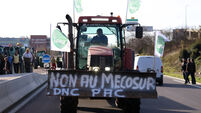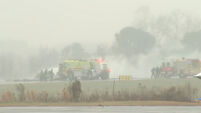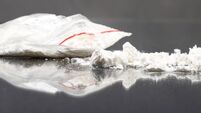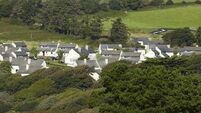Moon 'bombing' mission fails to cause impact
A mission that promised dramatic fireworks as two spacecraft smashed into the Moon at more than 5,000mph ended up looking like a damp squib today.
The “bombing” mission was supposed to kick up a six-mile high cloud of debris that scientists hoped would contain signs of water.
But live pictures relayed back from the Moon showed no sign of an impact – even though both craft dived into a darkened crater as planned.
Without an adequate plume of material to analyse, scientists may not find the answers they are looking for.
A British expert who helped the American space agency Nasa pick the location near the Moon’s south pole said the lunar surface may not have reacted as expected.
But Dr Vincent Eke, from the University of Durham, stressed it was still too early to know whether the mission had been a success or failure.
“If it turns out to be as dull as it looked, I’d imagine the soil just didn’t respond as was hoped to being hit,” said Dr Eke. “It might mean we don’t get sufficient data, which would be a shame.”
Dr Eke’s team discovered strong evidence of hydrogen – a key component of water - within cold permanently shadowed craters at the Moon’s poles, where temperatures fall to minus 200C.
Today’s mission was intended to find out if water ice exists at the bottom of the crater Cabeus, 100 kilometres from the lunar south pole.
Finding water, which could be used for drinking, making fuel and providing oxygen, would have major implications for the future of moon exploration.
A ready supply of water would make it far more practicable to build lunar bases or launch missions to Mars from the Moon.
The crashing spacecraft consisted of a Moon-mapping orbiter, LCROSS (Lunar Crater Observation and Sensing Satellite) and a 2.2 tonne empty Centaur rocket.
After they were blasted into space in June, the probe hung on to the rocket, which formed the upper stage of its launch vehicle.
In the early hours of today, UK time, the pair separated and the final countdown began to send them both crashing into the crater Cabeus.
Nasa broadcast the final moments of the drama, filmed by the LCROSS spacecraft, live on its website.
The pictures continued beaming back to Earth as the larger rocket took the first plunge just after 12.30am, UK time.
But the dramatic explosion that was predicted failed to materialise. The only evidence of an impact was a small “thermal signature” picked up by the LCROSS probe’s infra-red camera.
Bemused experts commenting live on the mission continued to be up-beat. One said: “All the indications are that the instruments were working, and no matter what we find, it’s going to be important.”













